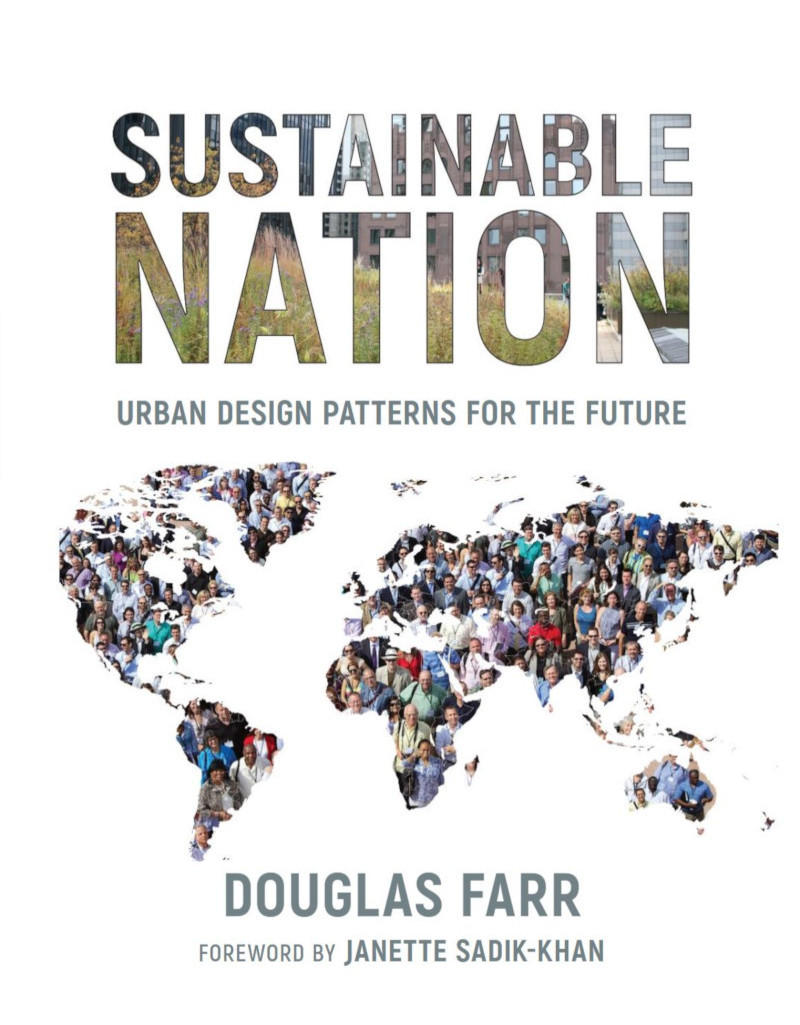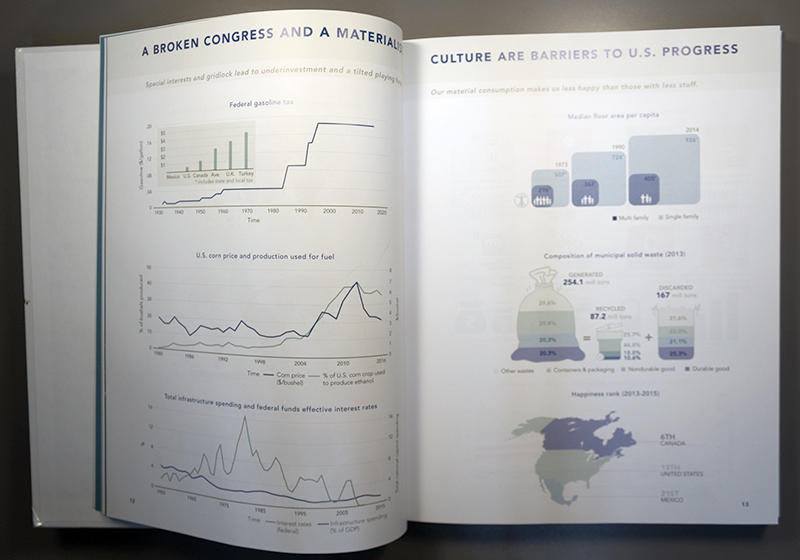Sustainable Nation
Sustainable Nation: Urban Design Patterns for the Future
Douglas Farr
Wiley, April 2018

Hardcover | 8-3/4 x 11 inches | 400 pages | English | ISBN: 978-0470537176 | $80.00
Publisher Description:




Author Bio:
(Note: Books bought via these links send a few cents to this blog, keeping it afloat.)




Douglas Farr
Wiley, April 2018

Hardcover | 8-3/4 x 11 inches | 400 pages | English | ISBN: 978-0470537176 | $80.00
As a follow up to his widely acclaimed Sustainable Urbanism, this new book from author Douglas Farr embraces the idea that the humanitarian, population, and climate crises are three facets of one interrelated human existential challenge, one with impossibly short deadlines. The vision of Sustainable Nation is to accelerate the pace of progress of human civilization to create an equitable and sustainable world. The core strategy of Sustainable Nation is the perfection of the design and governance of all neighborhoods to make them unique exemplars of community and sustainability. The tools to achieve this vision are more than 70 patterns for rebellious change written by industry leaders of thought and practice. Each pattern represents an aspirational, future-oriented ideal for a key aspect of a neighborhood. At once an urgent call to action and a guidebook for change, Sustainable Nation is an essential resource for urban designers, planners, and architects.dDAB Commentary:
It's been ten years since Chicago architect and planner Douglas Farr released Sustainable Urbanism, an excellent book that advocated for for transit-served, walkable neighborhoods with high-tech buildings and infrastructure. In his follow up, Sustainable Nation, Farr continues roughly along those lines but with an expanded scope and an increased sense of urgency; given that climate change was something in the future a decade ago but is now actually happening, that urgency is warranted. As the subtitle of the book implies, urban design patterns are the means of creating a more sustainable future. In the four-part structure of the book, the patterns fall into the last but make up a little more than half of the book's pages. The patterns offer short, two- or four-page spreads by a variety of practitioners on things like Burning Man-inspired art events, tactical interventions in underused public spaces, and designing all buildings as net-zero. Thorough yet far from comprehensive, the patterns (some available on The Pattern Project website) reinforce Farr's position that bottom-up tactics are more important than bottom-down solutions.Spreads:
The first half of the book frames the arguments for the patterns that follow by illustrating data about "our default world," collecting case studies of commendable buildings and neighborhood plans, painting a picture of a sustainable future and laying out broadly how we can get there. Illustrations throughout the book aid in explaining the loads of complex information in the book, and it's in the first half that those graphs, charts, lists, and other graphics are most helpful. For example, Farr asserts that all untapped oil, coal, and natural gas needs to stay in the ground to reverse the course we're on, and he uses the decline in smoking — illustrated through graphs — as an example of how Americans have been able to respond to one emergency. Although climate change is an emergency that makes smoking pale by comparison and addressing it seems insurmountable as carbon output increases each year, the optimism of Farr's book makes it seem otherwise: that positive change is attainable within the next few generations. The alternative, after all, shouldn't be an option.




Author Bio:
Douglas Farr is an architect, urbanist, author, and passionate advocate for sustainable design thinking. Doug heads Farr Associates, a Chicago-based firm that plans and designs lovable, aspirational buildings and places.Purchase Links:
(Note: Books bought via these links send a few cents to this blog, keeping it afloat.)



